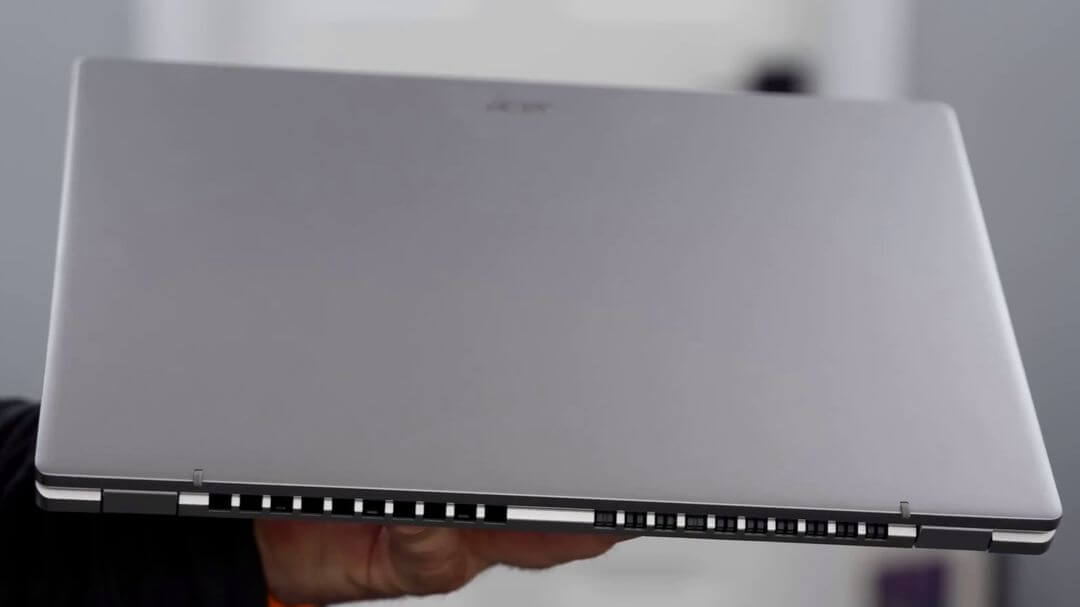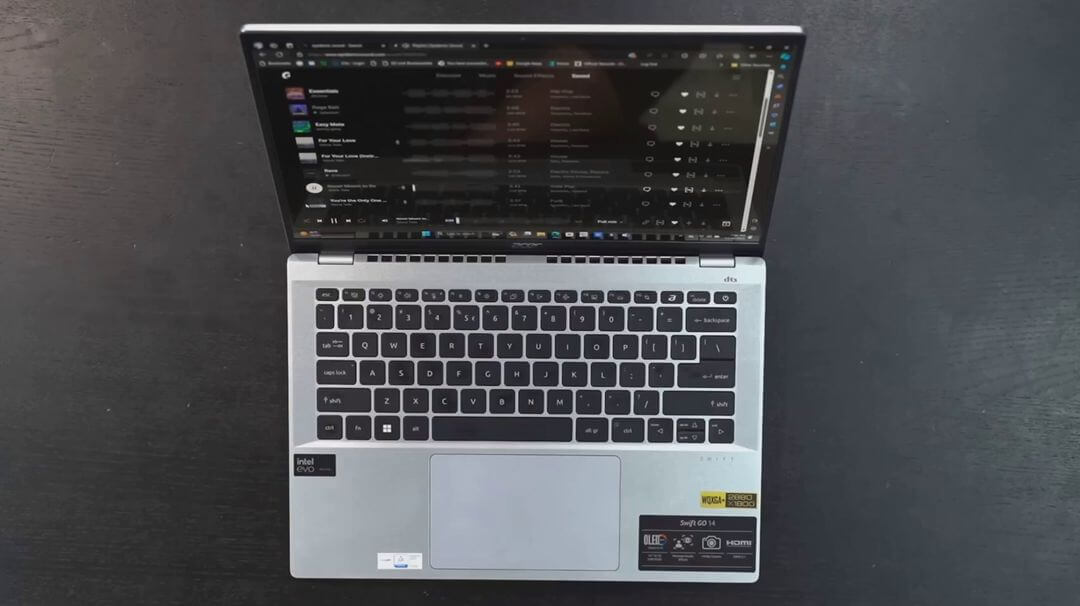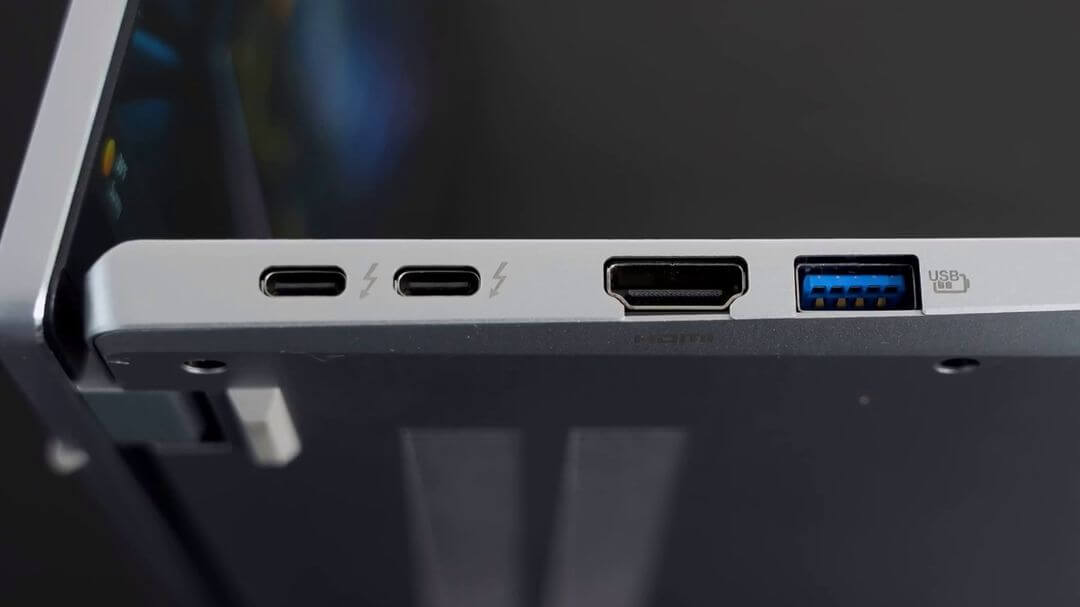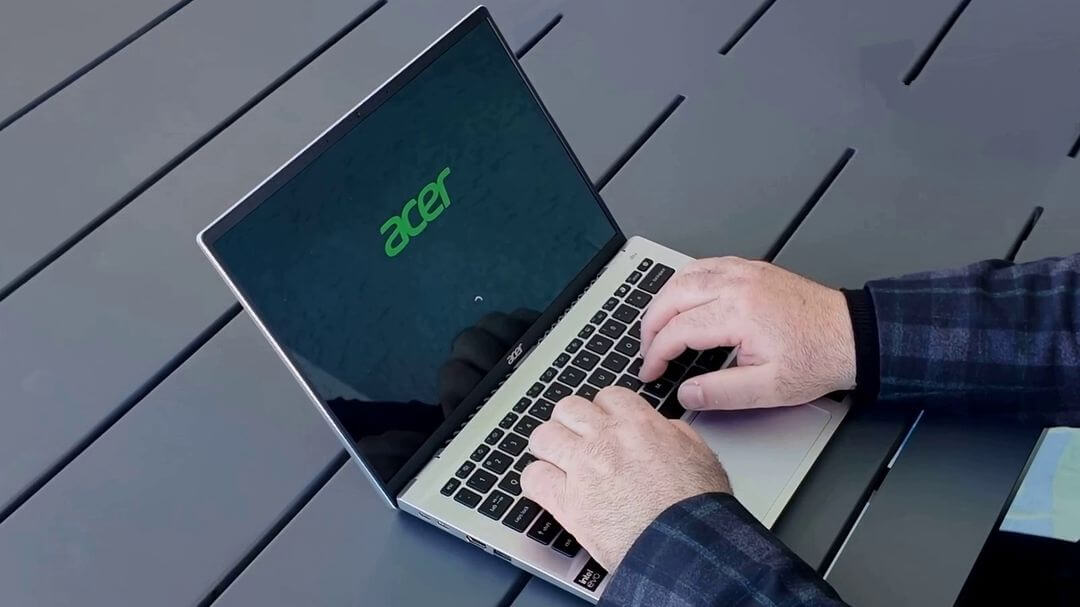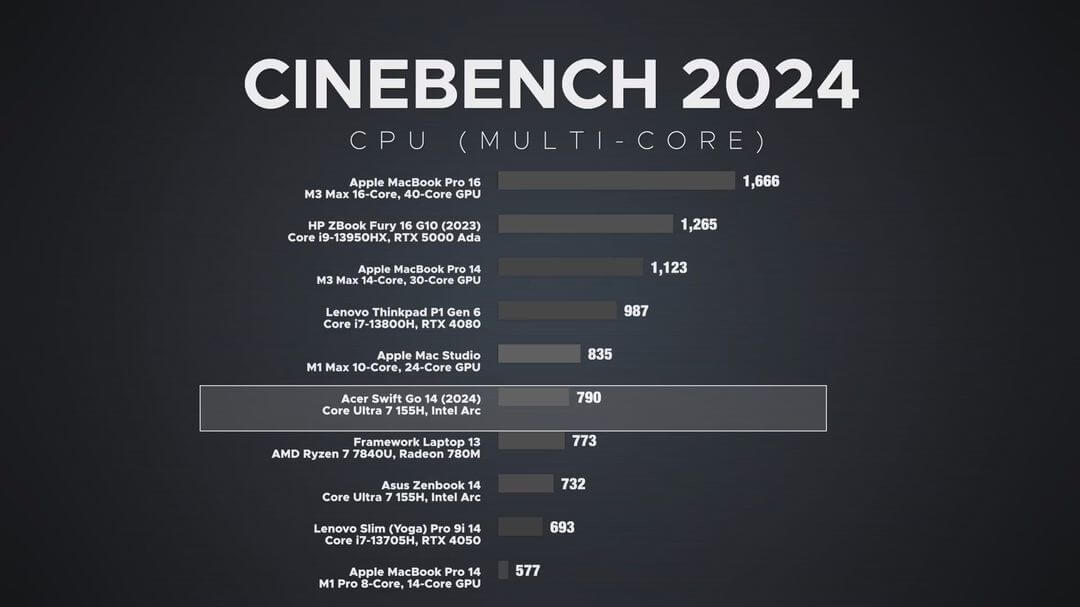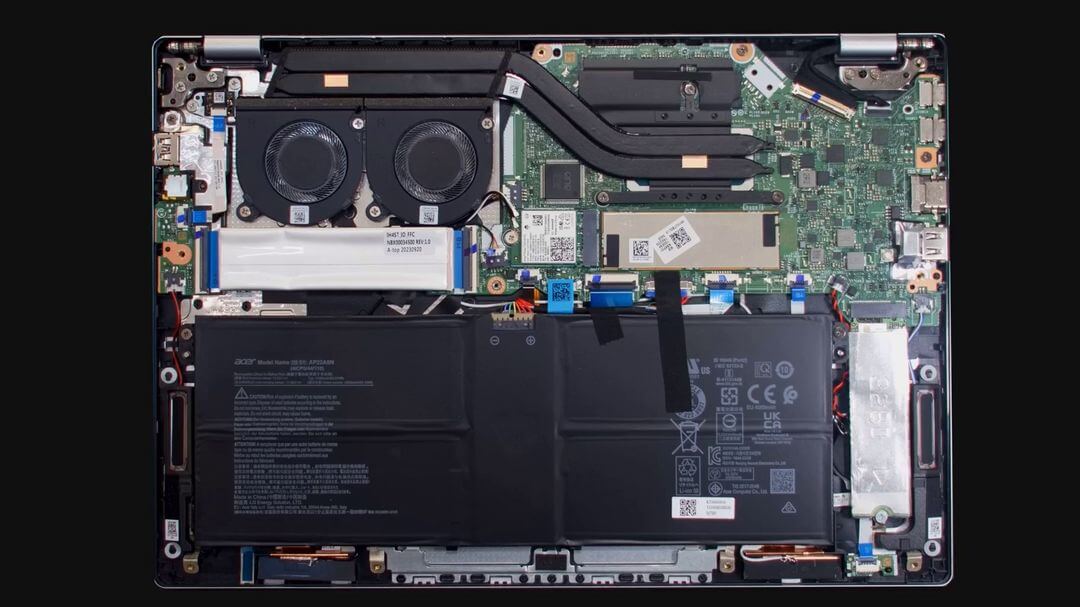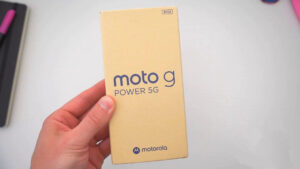Acer Swift Go 14 (2024) Review: Bright, powerful, and compact!
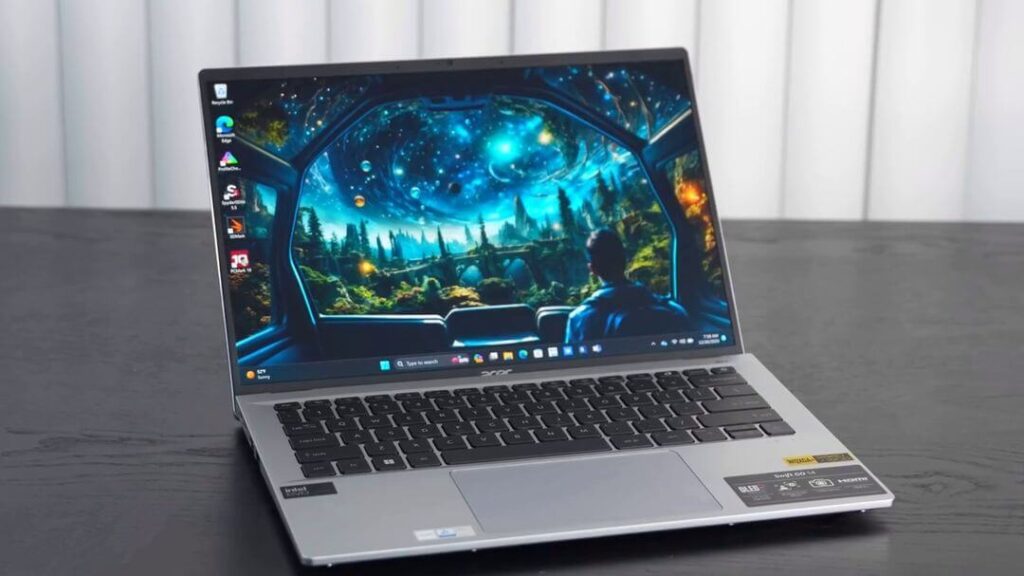
Today, we delve into the review of the Acer Swift Go 14 (2024, SFG14-72), a compact laptop that marks Acer’s foray into the new era of computing platforms. As the Intel Core Ultra platform takes center stage, ultrabooks are poised for updates in the months to come, with Acer leading the charge with its Swift Go 14 (2024), following in the footsteps of Asus Zenbook 14 OLED.
In a direct comparison, both the Acer Swift Go 14 and its Asus counterpart are built around a 14-inch 2.8K OLED display and feature the latest Intel Core Ultra 7 155H CPU. However, Asus takes a slight lead with its touch interface and a higher 120Hz refresh rate on the screen.
Acer Swift Go 14 (2024): Video Review
| Specs | Acer Swift Go 14 (2024, SFG14-72) |
| Screen | 14" WQXGA+ (2880 x 1800) 16:10 CineCrystal (Glare) 90 Hz |
| Processor | Intel Cor Ultra 7 Processor 155H 1.4 GHz (24MB Cache, up to 4.8 GHz, |
| 16 cores, 22 Threads); Intel AI Boost NPU | |
| Graphics | Intel Arc Integrated Graphics |
| RAM | 16 GB LPDDR5X |
| Storage | 1 TB PCIe 4.0 SSD |
| Connectivity | WiFi 6E (802.11ax), Bluetooth 5.3 |
| Camera | 1440p sensor |
| OS | Windows 11 Home |
| Audio | 2 Speakers |
| Battery | 65 Wh, Lithium Ion (Li-Ion) |
| Ports | USB-C Thunderbolt 4 (x2), USB 3.2 Gen 2 Type-A (x2), HDMI 2.1, combo audio jack, microSD card slot |
| Dimensions | 313 x 218 x 14.9mm |
| Weight | 1.32kg |
Acer Swift Go 14 (2024): Design
The Acer Swift Go 14 (2024) maintains the familiar design language that Acer has been known for, offering a classic ultrabook experience in an all-silver metal chassis. The 14-inch form factor strikes a balance between portability and usability, making it a suitable choice for users on the go. While it may not claim the title of the world’s lightest laptop, its weight of 1.32 kilograms remains manageable and unlikely to pose any inconvenience.
Examining the finer details, the metal components of the Acer Swift Go 14 are well-crafted, contributing to the device’s overall premium feel. However, some minor criticisms emerge, such as the sharpness of the openings on the back for air ventilation. Additionally, the choice of star screws instead of more common Phillips screws for the backplate might be considered a drawback by some users.
The keyboard configuration remains largely unchanged, featuring well-spaced keys with rounded corners. The activation distance is considered satisfactory for an ultrabook, though some users may find the feedback a bit softer than desired. On the other hand, the large touchpad stands out as a positive aspect, well-centered on the chassis and offering a defined click without being overly rigid.
In terms of connectivity, the Swift Go 14 laptop offers a comprehensive selection of ports. On the left side, users will find two USB-C Thunderbolt 4 ports, a full-size HDMI 2.1 port, and a USB-A 3.2 Gen 1 port. Meanwhile, the right side hosts a USB-A 3.2 Gen 1 port, a combo jack port, and a microSD card reader. The inclusion of two USB-C Thunderbolt 4 ports is particularly noteworthy, providing users with versatility for various peripherals.
The laptop’s webcam features a 1440p sensor with software processing developed by Acer. While the increased sharpness is apparent, the color reproduction from Acer’s processing may be perceived as dull and lacking vibrancy. The device leverages Core Ultra for AI-driven automatic framing and background blurring during video conferencing, enhancing the user experience in this regard.
Display
The Acer Swift Go 14 (2024) features a vibrant 14-inch OLED panel with a resolution of 2800 x 1880 pixels and a 16:10 aspect ratio. This display, while not featuring touchscreen capabilities or a matte finish, compensates with a remarkable maximum refresh rate of 90 Hz, enhancing the overall visual experience.
Our in-depth analysis, conducted with DisplayCal software, reveals impressive color capabilities. The panel covers a wide 172.8% of the sRGB color space and an impressive 122.4% of the DCI-P3 space, indicating a departure from the limitations of the sRGB standard in 2024. The brightness is a standout feature, reaching a peak of 507 cd/m², underlining the HDR potential of the laptop. The OLED panel further delivers an infinite contrast ratio, contributing to a visually stunning display.
The average color temperature measures a commendable 6366K, closely aligning with the sought-after NTSC standard of 6500K. However, the average Delta E00, a metric indicating color accuracy, is not the best calibrated, registering at 2.62 points on average with a maximum difference of 5.44 on khaki tones. While this still falls below the threshold of 3, which is considered the upper limit for precise color display, it’s worth noting that some competitors in the market offer more finely tuned factory calibration. Even the DCI-P3 display mode does little to alter this calibration scenario.
Despite these minor calibration considerations, the OLED panel’s brilliance overshadows any shortcomings. The exceptional brightness, coupled with the vivid color reproduction, makes for an immersive viewing experience. The only aspect that might leave room for improvement is the 90 Hz refresh rate, especially as 120 Hz has become a standard in the market. Nevertheless, the overall display quality is excellent, consistently pleasing the eyes and setting a high standard for visual enjoyment.
Software
The Acer Swift Go 14 (2024) comes equipped with the latest Windows 11, offering users a modern and visually appealing operating system. Acer has taken note of user feedback regarding its software suite and made notable improvements, expanding the AcerSense suite to provide users with more control over their system’s health and usage modes. The interface is not only user-friendly but also aesthetically pleasing, enhancing the overall user experience.
However, Acer’s enthusiasm to enhance user experience extends to additional software programs that may be perceived as unnecessary or even intrusive. For instance, a wallpaper engine has been included, introducing a shaky and somewhat disruptive 3D effect. Similarly, a quick tools panel has been integrated, which, rather than proving useful, may be more of an interruption. While the intention to offer utilities is commendable, the age-old adage of “less is more” holds true, especially when dealing with an operating system as established as Windows 11.
A notable aspect that might irk users is Acer’s inclination to pre-install various third-party applications, including McAfee, Dropbox, and Booking.com. While the intention behind these installations may be to offer additional features and services, some users prefer a more streamlined experience. Fortunately, Acer provides the option to easily remove these pre-installed applications, giving users the flexibility to customize their system according to their preferences.
Acer Swift Go 14 (2024): Performance
The Acer Swift Go 14 (2024) is powered by the impressive Intel Core Ultra 7 155H, a component from the new Meteor Lake SoC that introduces significant advancements. This SoC incorporates 16 cores, comprising 6 performance cores, 8 efficient cores, and 2 ultra-efficient cores, enabling a total of 22 threads. With a turbo boost capability of up to 4.8 GHz, this 65W platform places it in the same league as its predecessor, the P range. The CPU is complemented by an Intel Ark GPU featuring 8 X-cores and is accompanied by 32 GB of LPDDR5x RAM. The storage aspect is well-handled with a spacious 1 TB PCIe 4.0 SSD.
In terms of raw computing power, the Acer Swift Go 14 (2024) demonstrates impressive performance. Cinebench R23 multi-core and single-core scores of 13446 and 1772 points, respectively, showcase the capabilities of the Core Ultra 7 155H. Notably, the energy management of the processor appears superior, allowing it to deliver more power than its counterpart, the Zenbook 14 OLED of 2024, on the same platform.
However, the comparison with AMD’s Zen 4 of 2023 suggests that while the Acer Swift Go 14 excels in performance, the overall power evolution might not represent a major leap forward.
Turning attention to the NPU (Neural Processing Unit), a component dedicated to artificial intelligence calculations, the Acer Swift Go 14 achieves an overall score of 154 on the Procyon Windows ML test. Although this score falls short of the Zenbook’s 196, it points to a potential philosophical difference in approach between Acer and Asus, with Acer seemingly prioritizing raw performance over a balanced integration of the NPU.
On the GPU side, the Acer Swift Go 14 delivers competitive scores with 317 on Speed Way, 1359 on Port Royal, and 1861 on Time Spy Extreme, aligning with previous observations and demonstrating robust graphical capabilities.
Where the device falls slightly short is in storage performance. With a sequential read/write rate of 5007 and 4591 MB/s, the Acer Swift Go 14 appears to have opted for a compromise, as these rates are more in line with early PCIe 4.0 standards. Users might have expected higher scores, particularly as PCIe 5.0 becomes more prevalent in the market, pushing rates closer to 7000 MB/s.
Cooling and noise
The Acer Swift Go 14 (2024) continues Acer’s established trend of being unafraid to leverage its fans to unlock additional power. Unlike some competitors, Acer opts for a more proactive fan strategy, allowing them to engage quickly when demanding tasks require heightened performance. While the fans remain relatively quiet, this choice emphasizes the brand’s commitment to maximizing the laptop’s power potential. Fortunately, the temperatures of the Acer Swift Go 14 (2024) remain commendable, with a recorded maximum of 46°C at the bottom of the chassis during full synthetic loads.
Battery life
The laptop houses a 65Wh battery, providing a substantial power source for sustained usage. Charging is facilitated by the supplied 100W power supply, which adopts the USB-C format and leverages the Power Delivery standard.
One notable feature is the integration of the new ultra-efficient cores in the Intel Core Ultra, which significantly impacted the battery life of the Asus Zenbook 14 OLED. However, with the Acer Swift Go 14 (2024), the results are somewhat mixed. In typical office use scenarios, the laptop delivers approximately 10 to 11 hours of battery life. While this is a notable improvement over its predecessor, it falls slightly short of the impressive 15 hours achieved by a competitor.
Acer Swift Go 14 (2024): Conclusion
The Acer Swift Go 14 (2024) unfolds its narrative as a testament to the power and potential brought forth by the Intel Core Ultra processor. This launch marks a pivotal moment, as it ushers in a GPU that demonstrates efficiency in an Intel-based ultrabook, and a level of performance that stands up well against the seventh generation of ultraportable Ryzen processors.
Complementing the prowess of the Core Ultra, Acer incorporates a stellar OLED panel that elevates the visual experience, coupled with a well-designed chassis that makes discerning choices, even if there might be room for improvement in certain finishes. However, the overall package is not without its drawbacks, notably in the software domain, where Acer’s refined yet ad-laden universe might be perceived as a downside.
Being an early adopter of a new architecture comes with its pros and cons for the Swift Go 14 (2024). On the positive side, Acer stands out as a manufacturer currently delivering excellent sustained performance. Conversely, areas such as the AI component and battery life require further optimization, even though the initial scores provide encouraging glimpses into future enhancements.
You can also check out the best-selling Traditional Laptops on Amazon:


